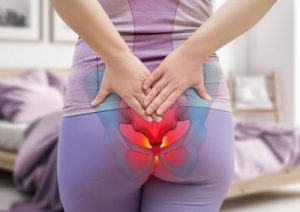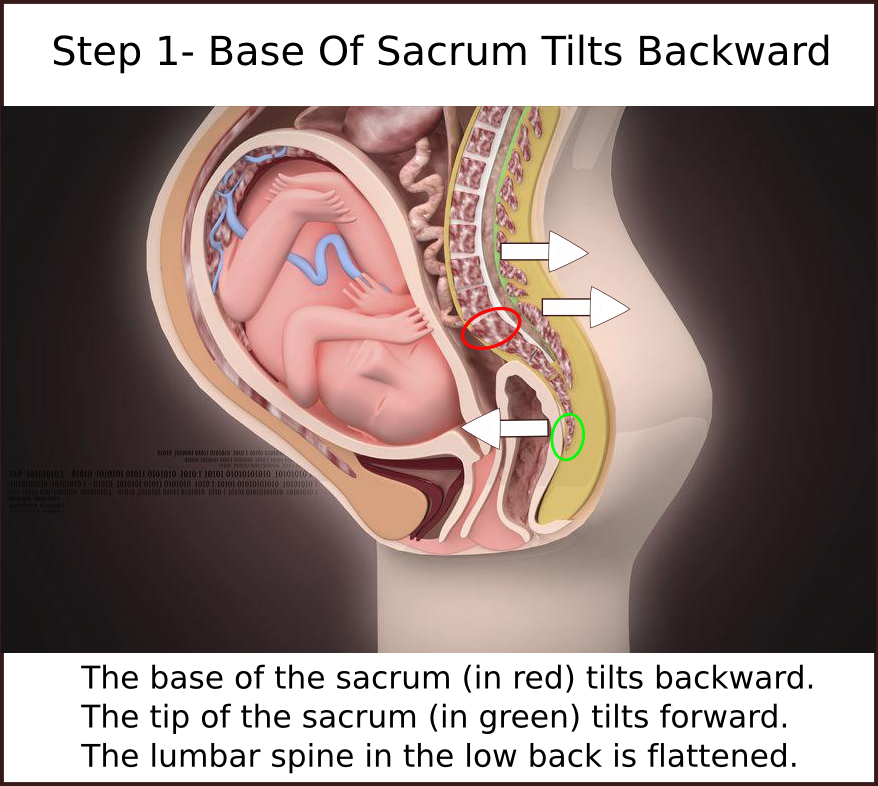Back
Why does my tailbone hurt so much after giving birth?
By Shannon Strauch, PTA, STMT-1 on 8/21/2024

Childbirth is one of the most profound experiences in a woman's life, but it can also bring about significant physical changes, particularly in the pelvic region. One often-overlooked area that can be affected during childbirth is the tailbone or coccyx. Understanding how childbirth impacts the tailbone and how pelvic floor therapy can help both during and after the birthing process is essential for a smoother recovery and long-term health.
Understanding the Impact on the Tailbone
The tailbone, or coccyx, is a small triangular bone at the base of the spine. Though small, it plays a crucial role in supporting various muscles, tendons, and ligaments in the pelvic region. During vaginal childbirth, the baby’s descent through the birth canal exerts pressure on the tailbone. In some cases, this pressure can lead to bruising, misalignment, or even a fracture of the tailbone.
Common symptoms of tailbone injury or trauma during childbirth include:
Coccydynia
: Tailbone pain that can range from mild discomfort to severe pain, particularly when sitting or during certain movements.
Stiffness or limited mobility
: Difficulty in bending or sitting comfortably.
Pain during bowel movements
: The tailbone's connection to pelvic floor muscles can make bowel movements painful if the tailbone is injured.
Effects of Childbirth on the Pelvic Floor
The pelvic floor is a group of muscles that support the bladder, uterus, and rectum. During pregnancy, these muscles stretch and adapt to support the growing baby. Labor and delivery further stress these muscles, especially during vaginal birth, where the pelvic floor undergoes immense pressure.
Common pelvic floor issues after childbirth include:
Pelvic organ prolapse
: Where one or more of the pelvic organs drop from their normal position.
Urinary incontinence
: Leakage of urine, especially when coughing, sneezing, or exercising.
Perineal tears
: Tearing of the area between the vagina and anus during childbirth.
The Role of Pelvic Floor Therapy During Pregnancy and Labor
Pelvic floor therapy (PFT) is a specialized form of physical therapy that focuses on strengthening and relaxing the pelvic floor muscles. Engaging in PFT during pregnancy can be beneficial for both the mother and baby. Here's how:
Preparation for labor
: PFT can help prepare the pelvic floor muscles for the demands of labor. Therapists teach specific exercises to enhance muscle strength, flexibility, and coordination, which can make the birthing process smoother and potentially reduce the risk of tailbone injury. They can also assist in finding comfortable birthing positions and ways to open up your pelvic outlet for an easier delivery process

(Picture demonstrating pressure on tailbone when birthing on your back)
Pain management
: Techniques such as biofeedback and manual therapy can help manage pain and discomfort during pregnancy and labor.
Breathing techniques
: Learning proper breathing techniques through PFT can aid in reducing strain on the pelvic floor during childbirth.
Immediate Postpartum Care and Recovery
After childbirth, the pelvic floor muscles need time to heal and regain strength. PFT plays a crucial role in postpartum recovery by addressing both pelvic floor dysfunction and tailbone pain.
Tailbone recovery
: PFT can help realign the tailbone and alleviate pain through manual adjustments, targeted exercises, and posture correction.
Pelvic floor strengthening
: Strengthening exercises, such as Kegels, are tailored to each individual’s needs to restore muscle tone and function.
Pain reduction
: Therapists may use techniques like myofascial release to ease tension in the pelvic floor muscles, which can help reduce tailbone pain.
Long-Term Benefits of Pelvic Floor Therapy
The benefits of PFT extend far beyond the immediate postpartum period. By addressing pelvic floor dysfunction early, women can prevent long-term complications, such as chronic tailbone pain or pelvic organ prolapse.
Prevention of chronic pain
: Regular PFT can prevent the onset of chronic coccydynia by ensuring the tailbone is properly aligned and the surrounding muscles are functioning optimally.
Improved quality of life
: By strengthening the pelvic floor muscles, women can enjoy a better quality of life, with reduced pain, improved continence, and better sexual function.
Conclusion
Childbirth is a demanding process that can take a toll on your body, especially your tailbone and pelvic floor. However, with the right care and support, such as pelvic floor therapy, you can recover more smoothly and reduce the risk of long-term issues. Whether you’re preparing for labor or recovering postpartum, incorporating PFT into your care plan can make a significant difference in your overall health and well-being.
If you’ve recently given birth and are experiencing tailbone pain or other pelvic floor issues, reach out to us at Pelvic Health Center in Madison, NJ to set up an evaluation and treatment! Feel free to call us at 908-443-9880 or email us at receptionmadison@pelvichealthnj.com. Early intervention can help you get back to feeling your best and enjoying motherhood to the fullest.
Read More:
How Chronic Pelvic Congestion in Men Contributes to Prostatitis By Shannon Strauch, PTA, STMT-1 on 12/11/2024 How lymphatic issues can cause symptoms of prostatitis Prostatitis and Tight Pelvic Floor Muscles: A Comprehensive Guide By Shannon Strauch, PTA, STMT-1 on 12/10/2024 How a tight pelvic floor can be the reason for prostatitis symptoms
Are you ready to live pain free?
Request An Appointment